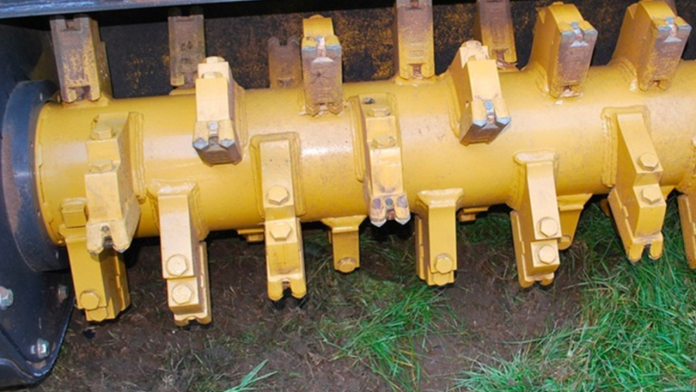A wood chipper blade is an essential thing designed to correctly destroy down wooden into smaller pieces or chips. Usually made from high-energy metal or alloy, those blades are characteristic of a pointy facet that cuts through wood fibers effectively. The design of the blade consists of concerns for stability, durability, and sharpness retention over time. Proper renovation, which includes sharpening and occasional replacement, is essential to ensure foremost performance and safety.
Wood chipper blades are available in numerous sizes and configurations to match distinct models and applications, starting from small residential devices to industrial-scale machines utilized in forestry and landscaping. Normal inspection and care of these wood chipper blade are important for preserving productivity and extending the lifespan of the equipment.
Key Properties Of Wood Chipper Blades
Wood chipper blades are essential components of wooden chippers, designed to reduce, slice, and chip wood into smaller portions. Right here are the key properties of wood chipper blades
Hardness
Hardness is a crucial property in determining the blade’s potential to reduce via wood without becoming stupid speedy. Wooden chipper blades are frequently warm-dealt to increase their hardness. The heat treatment process entails heating the steel to an excessive temperature and cooling it rapidly. This procedure complements the blade’s capacity to maintain a pointy part even beneath heavy use. A more difficult blade can reduce extra efficaciously and remain longer, making it a crucial feature for wood chipper blades.
Sharpness
The sharpness of a wood chipper blade at once influences its efficiency. Sharp blades cut through wood extra effortlessly, requiring much less pressure and reducing strain on the machine. The reducing edge of the blade should be precisely ground to acquire the best sharpness. Normal sharpening is necessary to preserve this property, as even the best blades will be stupid over time with use. Preserving sharp blades not only improves slicing overall performance but also complements the general efficiency of the wood chipper.
Durability
Durability refers to the blade’s potential to withstand put on, chipping, and cracking beneath heavy use. Wonderful materials and the right warmness treatment are essential for boosting blade durability. Durable blades can take care of various forms of timber, consisting of tough, smooth, dry, and wet, without full-size damage. This resilience extends the blade’s lifespan, decreasing the want for frequent replacements and lowering preservation costs.
Size and Shape
The dimensions and form of wooden chipper blades vary depending on the design of the chipper and the sort of wood being processed. Blades can be instant, curved, or even have multiple cutting edges. The design of the blade affects its slicing action and performance. For example, instantly blades are regularly used for general-reason chipping, whilst curved blades can be more powerful for positive styles of wood or precise chipping requirements. The scale of the blade has to additionally be compatible with the chipper’s specs to make certain characteristics.
Balance
Proper balance is essential for the smooth operation of a wooden chipper. Unbalanced blades can cause vibrations, mainly due to uneven cutting and excessive put on the machine. Balanced blades make certain that the chipper operates smoothly and successfully, lowering the threat of harm to the machine and improving the quality of the wood chips produced. Producers commonly ensure that blades are properly balanced before they’re hooked up to the machine, however regular exams and maintenance are important to maintain this balance over the years.
Mounting Compatibility
Mounting compatibility refers to the blade’s capacity to fit securely inside the chipper’s blade holder or mounting system. Proper fitment ensures that the blades are held firmly in location throughout the operation, stopping accidents and ensuring green slicing. Blades have to be designed to suit the specific mounting requirements of the wooden chipper to ensure secure and powerful use.
Conclusion
The key properties of wood chipper blades are hardness, sharpness, durability, length and form, stability, corrosion resistance, and mounting compatibility are all essential for their performance and sturdiness. Understanding those properties can help users keep their wooden chippers correctly, ensuring that the blades stay sharp, durable, and efficient.
















